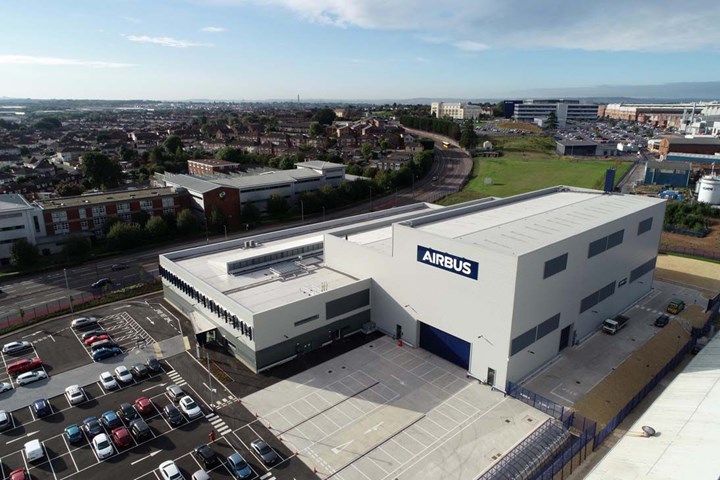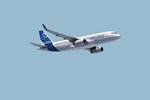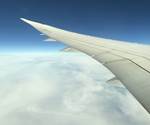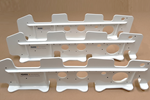Airbus opens Aerospace Integrated Research and Test Centre
Jointly funded by Airbus and the U.K. government’s ATI program, the £40 million research and testing facility serves to undertake structural testing of large-scale aircraft assemblies.

AIRTeC center. Photo Credit: Airbus
Secretary of State for Business, Energy and Industrial Strategy, Kwasi Kwarteng, has formally launched Airbus’ (Toulouse, France) Aerospace Integrated Research and Test Centre (AIRTeC) in Filton, Bristol, U.K.
AIRTeC is a £40 million, state-of-the-art research and testing facility jointly funded by the government’s Aerospace Technology Institute (ATI) program and Airbus. Covering more than 10,000 square meters of gross internal floor space — the equivalent of two football pitches — the Centre reportedly is designed to undertake structural testing of large-scale aircraft assemblies, from full-size wings down to the individual components and materials used in aircraft design. Airbus says it provides the most advanced working environment and tools for the company, alongside external suppliers, partners and academia, to deliver the next generation of aircraft wing, landing-gear systems and fuel system designs.
Furthermore, Airbus believes the facility is a key asset in helping industry accelerate the design, manufacture, testing, certification, infrastructure and commercial operation of zero-emission aircraft through sustained investment in R&T and R&D and fostering greater collaboration across sectors.
Companies in other sectors, such as maritime and nuclear, along with universities are able to use AIRTeC’s innovative, highly flexible and easily adaptable environment, which includes 65,000 square meters of state-of-the-art specialist test space, a 40-meter-long strong floor, and a 14 x 10-meter strong wall capable of testing full-size wings — with a force equivalent to the weight of 240 cars — using a 25 MN high-capacity loading test machine.
The facility also includes labs, collaborative office space and reconfigurable testing areas. Airbus notes that this combination of test assets is unique in Europe. The facility will enable Airbus and its partners to develop new and cutting-edge designs and is central to Airbus’ Wing of Tomorrow (WOT) program, which is said to be exploring the best materials, manufacturing and assembly techniques to help deliver more fuel-efficient, cleaner aircraft. The Airbus Filton site is also home to a 3D-printing plateau and digital manufacturing laboratory, as well as the Airbus low-speed wind tunnel.
Airbus employs about 2,800 people at its site in Filton. The company is said to be the largest commercial aerospace company in the U.K., as well as its biggest civil aerospace exporter, employing more than 13,500 people at 25 sites across the country.
“The launch of this new center comes as Airbus prepares to ramp up production of its most popular aircraft towards the end of the year— a clear vote of confidence in Britain as we build back better from the pandemic,” says Kwasi Kwarteng.
Related Content
-
Cryo-compressed hydrogen, the best solution for storage and refueling stations?
Cryomotive’s CRYOGAS solution claims the highest storage density, lowest refueling cost and widest operating range without H2 losses while using one-fifth the carbon fiber required in compressed gas tanks.
-
Composites manufacturing for general aviation aircraft
General aviation, certified and experimental, has increasingly embraced composites over the decades, a path further driven by leveraged innovation in materials and processes and the evolving AAM market.
-
Combining multifunctional thermoplastic composites, additive manufacturing for next-gen airframe structures
The DOMMINIO project combines AFP with 3D printed gyroid cores, embedded SHM sensors and smart materials for induction-driven disassembly of parts at end of life.
















